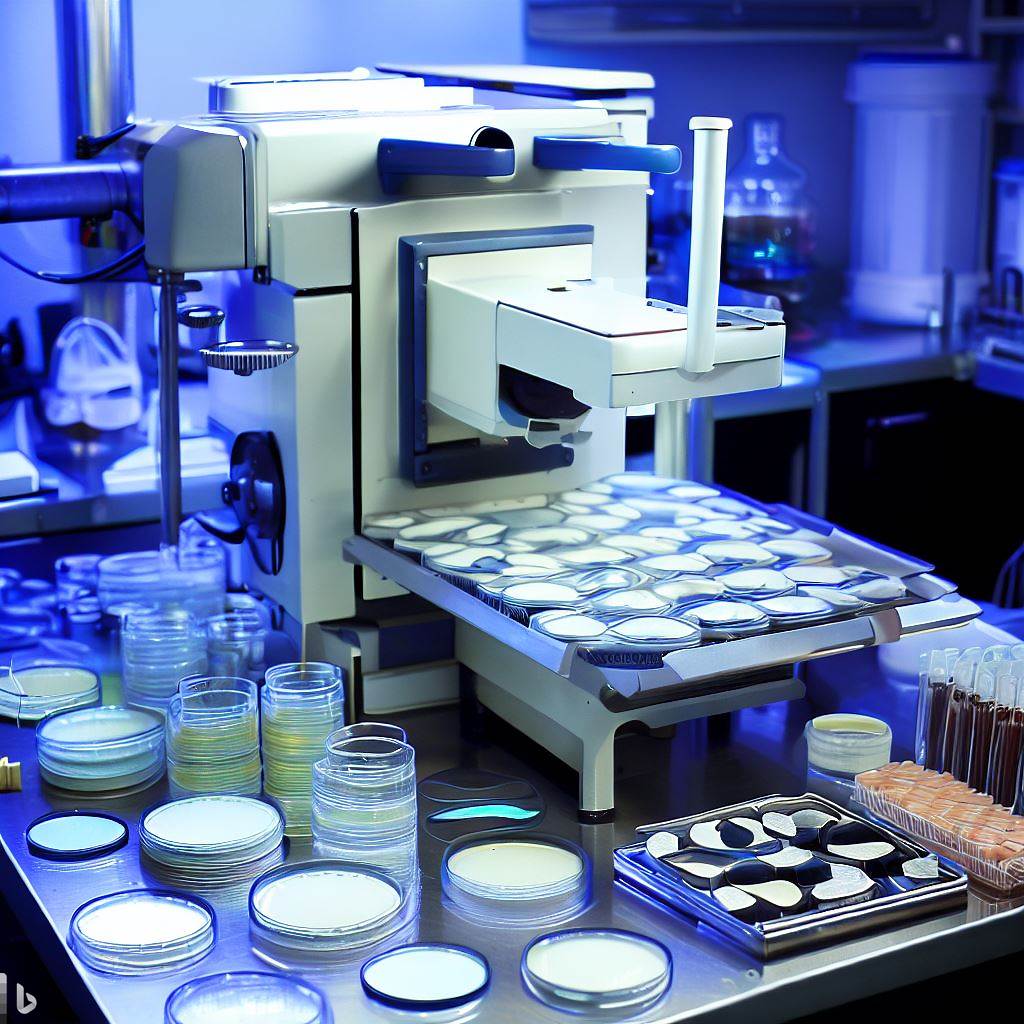In the vast microbial world, a remarkable battle takes place every day, shaping the delicate balance of life. This unseen struggle occurs on a microscopic scale, where tiny viruses called bacteriophages orchestrate a symphony of destruction known as phage lysis. Although viruses are often associated with diseases, their role in nature extends beyond harm, offering hope for novel treatments and solutions to microbial imbalances and antimicrobial resistance. In this article, we will explore the fascinating process of phage lysis, unveiling its inner workings with real-life examples, and highlighting its potential for the future.
Understanding the lysis itself:
To comprehend the phenomenon of phage lysis, we must first understand bacteriophages themselves. Imagine a vast army of minuscule, virus-like particles, each with a unique mission to infect and destroy bacteria. These phages possess an impressive arsenal of genetic material encased within a protein coat. Unlike conventional viruses that target humans, animals, or plants, phages have a voracious appetite for bacteria, making them a natural predators in the microbial world.
Phage lysis, despite its name, does not refer to the phage itself undergoing lysis. Rather, it is the phage that initiates the lysis of the bacterial cell (host). Once this process occurs, the newly formed phage particles are free to seek out and infect other host cells, continuing their lifecycle.
The Dance of Phage Lysis:
Phage lysis begins when a bacteriophage successfully infects a bacterial cell. This viral invasion starts innocently enough, with the phage attaching itself to the surface of the bacterium. Each phage is uniquely adapted to target specific receptors on the surface of a susceptible bacteria, and these receptors vary among different bacterial strains and species. Once attached, the phage injects its genetic material into the bacterium, essentially taking control of its cellular machinery.
From that point forward, the infected bacterium is caught in a precarious dance between life and death. The phage’s genetic material hijacks the bacterial cell’s replication machinery, forcing it to produce multiple copies of the phage’s components. These components include more genetic material, proteins, and enzymes that work harmoniously to propagate the phage’s lineage.
The Dramatic Finale:
As the phage replication proceeds, the bacterial cell becomes increasingly burdened. Eventually, the growing number of phage particles and enzymes known as lysins exceeds the capacity of the bacterial cell to contain them. This exponential increase in phage population triggers the final act of the symphony: lysis.
During lysis, the phage-infected bacterial cell ruptures dramatically, releasing a multitude of newly formed phage particles into the surrounding environment. This process occurs due to the action of a specialized enzyme produced by the phage, called an endolysin, which weakens the bacterial cell wall. The weakened cell wall ultimately succumbs to the pressure from the burgeoning phage population, resulting in a spectacular burst that sets the phages free.
The process of phage lysis may vary depending on the type of bacteria being infected. For instance, in the case of gram-negative bacteria, the lysis process involves three distinct steps that correspond to the subversion of each layer of the bacterial cell envelope: the inner membrane, peptidoglycan, and outer membrane. Control of this pathway primarily occurs at the level of the cytoplasmic membrane.
During canonical lysis, a specific phage-encoded protein called the holin gradually accumulates within the cytoplasmic membrane. It remains inactive until it reaches a particular time point, specific to the allele it carries. At this precise moment, the holin triggers the formation of micron-scale holes in the membrane. These holes serve as an exit route for the soluble endolysin, another phage-encoded protein, allowing it to escape from the cytoplasm and proceed to degrade the peptidoglycan layer.
Role in nature and human application:
- Phage Therapy: Phage lysis has gained considerable attention in recent years as a potential alternative to antibiotics. Researchers are investigating the use of phages to combat antibiotic-resistant bacterial infections. By harnessing the natural destructive power of phage lysis, scientists aim to develop personalized treatments tailored to specific bacterial strains, offering hope for a new era in medicine.
- Environmental Balance: Phage lysis plays a vital role in maintaining ecological equilibrium. For instance, in aquatic ecosystems, phages prevent bacterial overgrowth by infecting and lysing bacteria. This keeps bacterial populations in check, ensuring the health of the entire ecosystem.
Phage lysis, the symphony of destruction orchestrated by bacteriophages, showcases the complexity and elegance of nature’s microscopic battles. While phages may be perceived as adversaries, their ability to destroy bacteria carries immense potential for addressing antibiotic resistance and maintaining ecological balance. The ongoing exploration of phage lysis offers hope for the development of novel therapies and a deeper understanding of the intricate dynamics that shape our microbial world. As we continue to unveil the secrets of this viral symphony, we may discover even more ways to harness its power for the benefit of humanity.





Like the research topic, it’s a brilliant one